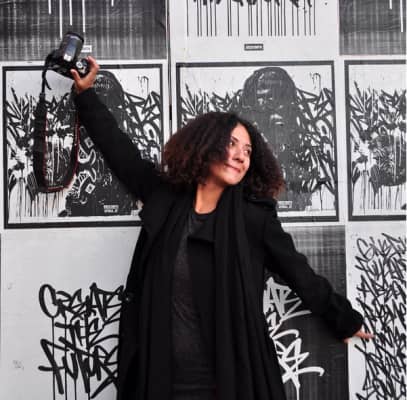How an Award-winning Egyptian Artist Uses Photography to Tell Personal Stories
Nourhan Refaat Maayouf has always had a penchant for storytelling through art. At a young age, she started expressing herself through drawing, before developing a passion for photography. As her love for taking photos grew, the 26-year-old Egyptian artist taught herself the craft, placing special focus on staged photography and storytelling.
Since pursuing a career as a part-time photographer in 2010, she has participated in a multitude of group exhibitions across Egypt as well as Hungary. But, Nourhan’s biggest achievement to date is probably winning the 2016 Barclays L’Atelier Art Competition. The prestigious competition, which has helped boost many young African artists’ careers, is open to ten countries, including Ghana, Kenya, South Africa, Zambia, Mauritius, Uganda, Egypt, Tanzania, and the Seychelles.
Nourhan’s award-winning project, July Tale, is an emotive series of three portraits that depict “the complexity of a relationship – the attachment of two souls in spite of being blind and silent about their mutual issues,” she explains.
We caught up with the self-taught photographer and chatted about everything from what makes her tick as a photographer to the Egyptian art scene and her background in marketing.

WHAT INSPIRED YOUR OUTSTANDING PROJECT, JULY TALE?
Most of my art projects are inspired by personal experiences. July Tale is a photography and mask project composed of three portraits, each is depicting the complexity of a relationship – the attachment of two souls in spite of being blind and silent about their mutual issues.
I express the idea of attachment and investment in relationships in the older generation. Nowadays people tend not to invest in or keep their relationships for the least reasons, while older generations used to keep relationships more despite issues like miscommunication.
YOUR OTHER SERIES, CONFLICTS, IS AS POWERFUL AS JULY TALE. HOW DID IT COME ABOUT?
The Conflicts project was also inspired by personal experiences. The photo series depicts the story of a family and their bond despite their conflicts. Each photo reflects the character of a family member and visualises the conflict one suffers. The father suffers from the conflict of life and death, however, he is full of energy and optimism. The mother suffers from the conflict of aging and the lost youth while the daughter is dependent on her parents even after she turned forty, the age of wisdom and full maturity.
WHAT DO YOU MAINLY WANT TO SAY THROUGH YOUR ART AND HOW DO YOU GET IT TO DO THAT?
I mainly like to deliver a message that touches all people coming from all walks of life, despite their nationality, culture, and social class. My art speaks a global language. Technically, I do this in my staged work through using neutral setting and models. And conceptually, through expressing common topics talking about relationships, social, and psychology matters.
YOU WORK FULL-TIME IN THE MARKETING INDUSTRY. HOW ARE YOU ABLE TO BALANCE THAT WITH YOUR PHOTOGRAPHY WORK?
I decided to study commerce and marketing to be able to get a source of income because it is difficult to generate an income out of art. Photography has been going parallel with my full-time job in marketing and communications for the past five years. I have also worked in various places such as multinationals, NGOs, and start-ups in the field of marketing research and communications. I work weekdays and do art over the weekend.
AT WHAT POINT DID YOU DECIDE YOU WANTED TO BE AN ARTIST?
I have always been an artist all my life. The upcoming period will be focused more on art, thanks to the Barclays L’Atelier prize of a 6-month residency in Paris, solo show at the [South African bank] Absa Gallery, and R225,000. Focusing on art more has always been part of the plan. With the growing success lately, I feel that my art needs to be enriched more.
WHAT KIND OF RESEARCH OR PREPARATION DO YOU DO BEFORE STARTING A PROJECT?
Photography is like drawing, you get a blank piece of paper and a pencil and start drawing. Similarly, I get in a location with some visual concept in my mind and start preparing the setting, from props, furniture, and models. I use simple props and shoot in a small corner in my room, relying on daylight. I don’t like complicating things, that’s why instead of a big studio and lights, I use whatever is available to me. Art is simple.
HOW WOULD YOU DESCRIBE THE EGYPTIAN CONTEMPORARY ART SCENE?
The Egyptian art scene is growing. We have many annual open calls for youth artists that encourage them to express themselves.
MANY YOUNG EGYPTIAN ARTISTS TEND TO CREATE ART WITH POLITICAL UNDERTONES. DOES YOUR WORK EVER GET POLITICAL?
My work doesn’t have a relation with politics. As I mentioned, it touches on relationships as well as social and psychological matters. However, some people may identify it politically or any other theme, and I welcome that. This is the beauty of art: we have different backgrounds so we identify things the way we come from.

